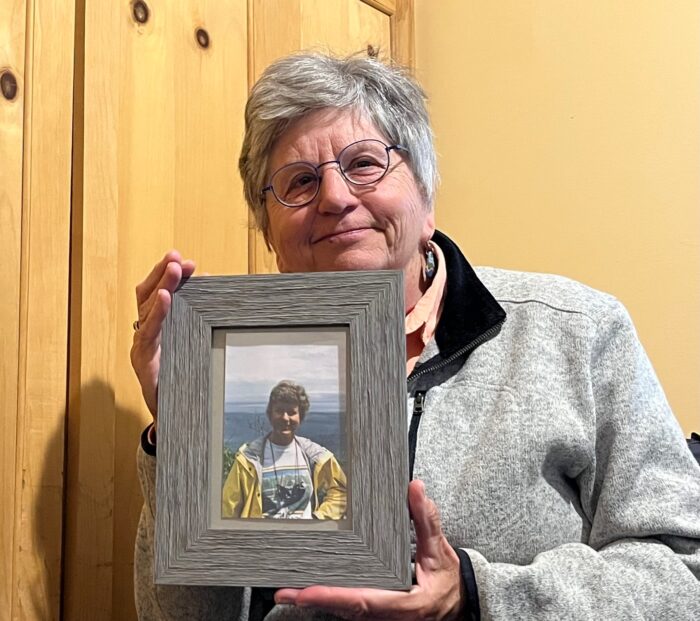WTIP and MN Dept of Health investigation finds no evidence for brain cancer cluster in Cook County
Multiple cases of glioblastoma – a type of brain cancer – were reported among the local population who live in and near Cook County during recent years.
As the number of glioblastoma cancers among local residents seemed to climb, WTIP coordinated with officials from the Minnesota Department of Health (MDH) to see if there was a possible cancer cluster to be aware of, and if so, what could be done about it.
According to the Centers for Disease Control and Prevention, a cancer cluster is defined as a greater-than-expected number of cancer cases that occurs within a group of people in a geographic area over a period of time.
Margee Brown, an epidemiologist at the Minnesota Department of Health (MDH), analyzed statewide cancer data and did not see an unusual elevation of glioblastoma in Cook County.
“We can never say for certain that something in the environment didn’t cause a cancer, but when we analyze the number of glioblastoma cases diagnosed in Cook County, using a method that allows us to compare cancer incidence in Cook County with the state, we did not see anything unusual,” Brown said.
The data analyzed for this report were for the 15-year period stretching from 2005 to 2019. This data was the most complete data available for this analysis, according to MDH officials. The data analyzed comes from the state’s population-based cancer registry. The registry collects data on new cancers diagnosed in Minnesota residents.
Using what is known as a ‘standardized incidence ratio’ (SIR) to determine if there is a brain cancer cluster in Cook County, state officials calculated that anywhere between two and nine cases of glioblastoma should have been expected locally between 2005 and 2019. Two such cases were reported among local residents during that time period, according to MDH.
To reach this figure, the researchers compared the observed number of glioblastomas occurring in Cook County residents during the 15-year period with the number of glioblastomas expected to occur if the rate of glioblastomas in the county was the same as in Minnesota. The ratio is calculated as the number of observed cancers divided by the expected number.
The SIR is used to evaluate the occurrence of rare cancers, including glioblastomas, or to evaluate cancer occurrence in small geographic areas where there typically are few cancers, Brown said. After analyzing the data, the results show that the number of glioblastomas diagnosed in Cook County residents could actually be lower than expected, state officials said.
In addition to the two cases MDH found in their review, WTIP is aware of multiple cases of glioblastoma among people who live in or near Cook County and who were diagnosed between May 2020 and June 2022. That number could be as high as six additional cases on top of the two MDH confirmed in its 2019 review of the data specific to Cook County.
Brown and others at the state’s health department acknowledged there have been additional cases of glioblastoma in the local population in the past three years. However, even with up to six additional cases, the incidence would still fall within the expected range based on the SIR analysis.
As state health officials report statistical findings, they also acknowledge the life-changing impacts a cancer diagnosis has on cancer patients, their families and communities. Data does not always align with human emotion. When there was an uptick in the number of brain cancer cases among Cook County residents, a natural, even expected, human response is “There’s something very wrong here,” according to officials from MDH.
The impact of losing a loved one to brain cancer has been felt locally in nearly every corner of the WTIP listening area, from Hovland to the end of the Gunflint Trail to the west end of the county.
Karen Kobey is a Lutsen resident. In 2020, Kobey’s spouse of 34 years, Ellen Stubbs, died from glioblastoma.
“I was on that journey that no one really wants to be on,” Kobey said.
Although much of the process was challenging, Kobey said the couple “were quite lucky” as Stubbs lived for more than two years after the brain tumor was discovered.
After the diagnosis, Kobey said she asked a number of oncologists what the cause of brain cancer is.
“They all just kind of throw up their hands and go ‘well, we don’t know,’” she said.
That being the case, Kobey said she understands that people who are impacted by brain cancer – either directly or when their family or friends become sick – seek an answer or cause as to why the cancer arrived.
“It’s a human thing, you want to go ‘what caused this?’” Kobey said. “And sometimes there are just no answers.”
Looking beyond the region, the possibility of a brain cancer cluster is not unique to the far reaches of northeastern Minnesota. This spring, an investigation occurred after it was discovered that 94 people from one New Jersey high school developed brain tumors. However, an analysis of the data by the New Jersey Department of Health found the expected number of brain tumors among students at the high school from 1968 to 2021 would be between 98 and 105. In other words, even though the number of brain cancer cases seemed high, further analysis did not indicate it was something unusual.
Brown said she and other health department officials talk throughout the year with Minnesotans concerned about cancer in their families, communities or workplace. People want to understand what caused the cancer or cancers, Brown explained, noting that cancer is a complex biological disease that results from changes to DNA that accumulate over many years, even decades.
State health officials said the insights into cancer that have been gained have come from epidemiologic studies involving large numbers of study participants, as well as from laboratory animal studies. Brown said the findings from this research can point to factors that increase or decrease the risk of developing cancer in populations but the findings cannot explain what caused any single person’s cancer.
That being the case, research into the causes of glioblastoma offer a few clues. As with many other cancers, age is an important factor, with glioblastoma rates increasing steadily with older age. The median age of diagnosis is 64 years, and most cases, about 95 percent, are age 40 years and older. Inherited genetic syndromes and past radiation to the central nervous system or head also increase the risk of glioblastoma. These factors account for only a small fraction of cases. Other research has consistently shown that people with allergies may have a decreased risk of developing glioblastoma. The suspected reason for lower risk is that a heightened immune response may be protective. However, more research is needed to develop a better understanding of why and how glioblastomas develop, Brown said.
To date, state officials at MDH said they are not aware of any cancer clusters involving glioblastoma in Minnesota. The fact is, cancers and other diseases naturally cluster at random. State officials explained it this way: Think of a piece of paper representing the state of Minnesota. In your hand, you’re holding 200 grains of rice. If you were to toss those grains of rice up into the air and let them fall on the paper, they would scatter across the page. If you were to repeat the exercise, the rice would fall in different spots, with various rice clusters gathering in different spots. This same concept applies to where brain cancer might happen in any given county over the course of years, or even decades. If the number of cases were to go higher throughout 2022, or into 2023 and beyond, it would not automatically mean there is a cancer cluster.
There have been only a few official cancer clusters in state history. One investigation found a plausible elevation of leukemia in a cohort of workers for the Minnesota Department of Transportation. Workers were potentially exposed to toxic substances including diesel fuels/exhaust, asphalt and tars, gasoline/benzene among others, but this study could not definitively link exposure to these substances to leukemia deaths.
Another cluster of mesothelioma in Minnesota comes from the Iron Range. This cluster was linked to occupational exposures to asbestos in ceiling tile manufacturing, but links to taconite in the mining industry were inconclusive.
Brown said well-designed studies that look at the causes of disease in populations, as well as toxicological research, are both necessary to learn more about how a chemical or environmental contaminant may cause or contribute to cancers in human populations.
State officials note that unusual groupings of cancer generate a great deal of concern. There is often the expectation that an investigation will uncover a specific environmental cause of cancer in a community. However, decades of experience in Minnesota and across the US show that these investigations rarely provide useful insights into the factors that increase the risk of developing cancer.
To hear a full report, including comments by Brown and David Jones, a supervisor in the environmental health division of the Minnesota Department of Health, listen to the audio below. Also featured in the segment are Kobey, as well as the late Janice Matichuk, the longest serving ranger in the history of Quetico Provincial Park.
Pictured above is Lutsen resident Karen Kobey, holding a photo of her spouse of 34 years, Ellen Stubbs.














